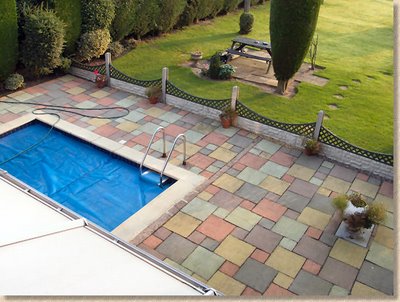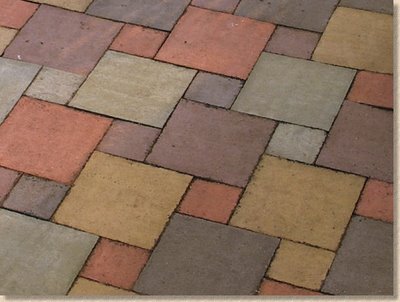Wednesday, October 22, 2008
They don't make 'em like this anymore!
While at Glee last month I stayed at Highfield Farm, a great B&B just off the M42/M6Toll junction at Curdworth, near Sutton Coldfield. It was late on the Sunday evening when I landed and after the best part of a day traipsing around the NEC, I was knackered and literally fell into the bed without taking any notice of my surroundings.
Next morning, I opened the blinds to check the weather and was greeted with this sight...

...WOW!
I thought all this old Marley paving had long since been binned, along with flock wallpaper, clackers and Showaddywaddy! Back in the 1970s, this was the ultimate in patio paving. No fancy exposed aggregates or shot-textures or stone from far-flung corners of the planet, oh no! When you wanted to impress the neighbours with your patio, the only real choice was Marley paving in a range of gaudy colours and three sizes (for some reason, the 2' x 1' size seems to be missing from this pool surround).

It is *so* of its time. I showed the picture to Denise O'Gara, now with Natural Paving but formerly marketing maestro at Marley, and we reckon it's possible to work out exactly when this patio was installed. 1973. April, probably the 18th, late in the afternoon!
In 35 years time, will we look back at an Indian sandstone patio with feature circle and immediately be transported back to 2008?
We tend not to be overly precious about historic paving. In many towns and cities throughout
Isn’t there some sort of government scheme to protect historically important constructions? Surely this should qualify as a national monument?
From memory, because of the soft textured finish, keeping the colours to look vibrant was darn near impossible.
Links to this post:
<< Home
Subscribe to Posts [Atom]

